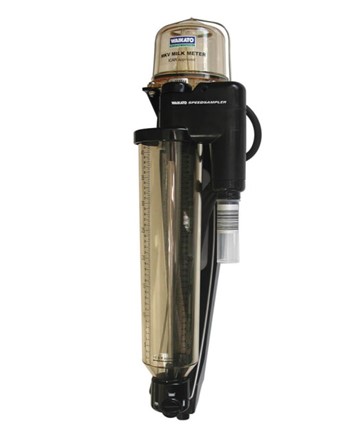In the Kaliningrad region, pork prices have fallen more than in Russia.

Over the past month, pork prices have fallen by 7-12% to 179 rubles per kilo.
Over the past month, the wholesale price of pork halves in the Kaliningrad region has fallen by almost 18%, Igor Kuznetsov, HEAD of the Baltic MEAT Company Three, told RBC Kaliningrad. From May to June, the producer sold a kilogram of halves wholesale for 159 rubles, 31 rubles less than the previous month.
This trend is also evident in greater RUSSIA. Over the past month, pork prices have fallen by 7-12% to 179 rubles per kilo. Having increased pork production amid high expectations for the opening of the Chinese market (in September of last year – editor's note), Russian farmers have not yet been able to promptly increase EXPORT volumes and are forced to sell meat domestically, Kommersant reported. This has led to increased supply and the beginning of a cycle of declining wholesale prices within Russia, the publication's sources believe.
The Kaliningrad expert is categorical in his conclusions: he has no plans to enter CHINA yet, saying he doesn't have the volumes for it. Igor Kuznetsov notes that although the Chinese have opened their market to Russian pork, they're reluctant to buy it in large quantities, preferring spare parts: snouts, ears, and tails. Price
drops at the meat market have been occurring every summer in recent years, Kuznetsov explains. The fruit and vegetable season begins, and due to the heat and the new harvest , buyers' preferences shift in their favor. This year, the situation was exacerbated by bad weather and a fire hazard, which nearly disrupted the opening of the barbecue season. Another important factor is the holiday season, when Kaliningraders travel. "Every year we see price drops in the summer. It's hard to say why. Most likely, people go on vacation . They prefer to consume lighter foods. "Consumption is declining, which is why we're creating a surplus of pork, and the price is going down," continues the head of Pribaltiyskaya Meat Company Three. He's convinced that it's premature to talk about market saturation. Production volumes will begin to increase closer to fall. The company currently operates both its facilities in Gusev and Chernyakhovsk, which allowed it to return to its previous production volumes of 150,000-200,000 head, or approximately 15,000 tons of meat per year, following the African swine fever ( ASF) emergency in 2022. At that time, 24,808 pigs were "forced to slaughter" in the region, 24,786 of which were destroyed at Pribaltiyskaya Meat Company Three. Meat
They are primarily sold on Kaliningrad shelves, with 25-30% of the total volume going to stores in "greater Russia." The manufacturer is in no rush to expand its markets or production volumes, being, in his words, "on sabbatical." He intends to take a break, calling the issue unaffordable given the high cost of building materials and high interest rates on loans. The situation, he says, is further exacerbated by the logistical problems of the Russian exclave.
"Until the situation with the delivery of building materials is resolved, their price, which is currently astronomical, we cannot afford a project to expand the pig farm or build a turkey farm. We will monitor how the economic situation changes. Logistics problems are one, and pricing of building materials is another. Well, it's very expensive. If we were to build housing, it could be sold for 120,000 rubles per square meter. Building pig farms for 120,000 rubles per square meter is a utopia. "They'll never pay off. So, we're currently waiting for them to go on sabbatical," Kuznetsov concluded.
As a reminder, in early April, the company announced plans to build a turkey farm in the region with a capacity of up to 30 tons per year. At the time, its construction was estimated to cost around 1.5 billion rubles, according to RBC Kaliningrad.
Read together with it:
- Indilight held a culinary masterclass with Silvena Rowe, promoting turkey as a healthy food.Silvena Rowe demonstrated original turkey cooking techniques, emphasizing its nutritional value. Participants prepared crispy turkey schnitzel with an almond-herb crust and turkey with turmeric and lime. The masterclass also emphasized a scientific approach to nutrition and promoted turkey as an ideal food for a healthy lifestyle. During the event, guests received unique gifts from the Louis Quart...
- С января по июль экспорт свинины из ЕС вырос на 1,6%На втором месте оказались Нидерланды с объёмом экспорта в 392 000 тонн. Дания экспортировала свинину в третьи страны с объёмом в 308 000 тонн, что примерно на 13% меньше, чем в предыдущем году. Германия экспортировала 180 000 тонн, что на 18% меньше, чем годом ранее. Это было обусловлено, главным образом, дополнительными ограничениями на экспорт, вызванными вспышкой ящура в начале года. Помимо зап...
- С начала года Московская область увеличила экспорт свинины на 35% в стоимостном выраженииМосковская область продолжает укреплять позиции одного из ведущих экспортеров продукции агропромышленного комплекса в России. По итогам 9 месяцев с начала года регион нарастил экспорт свинины на 35% по стоимости. В натуральном выражении объем поставок составил 85 тысяч тонн, что на 17% больше, чем за аналогичный период прошлого года. В Министерстве сельского хозяйства и продовольствия Московской о...



























































